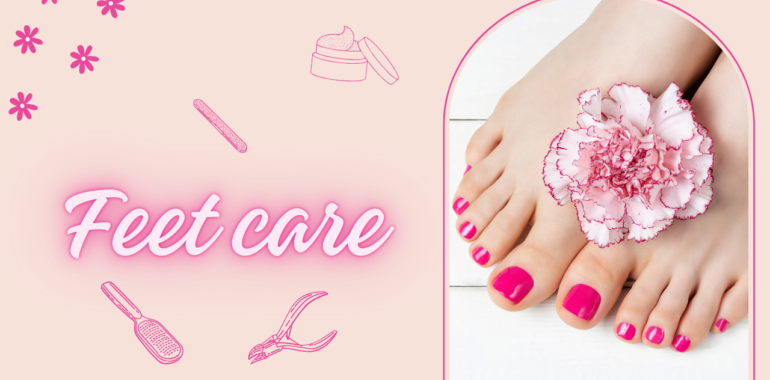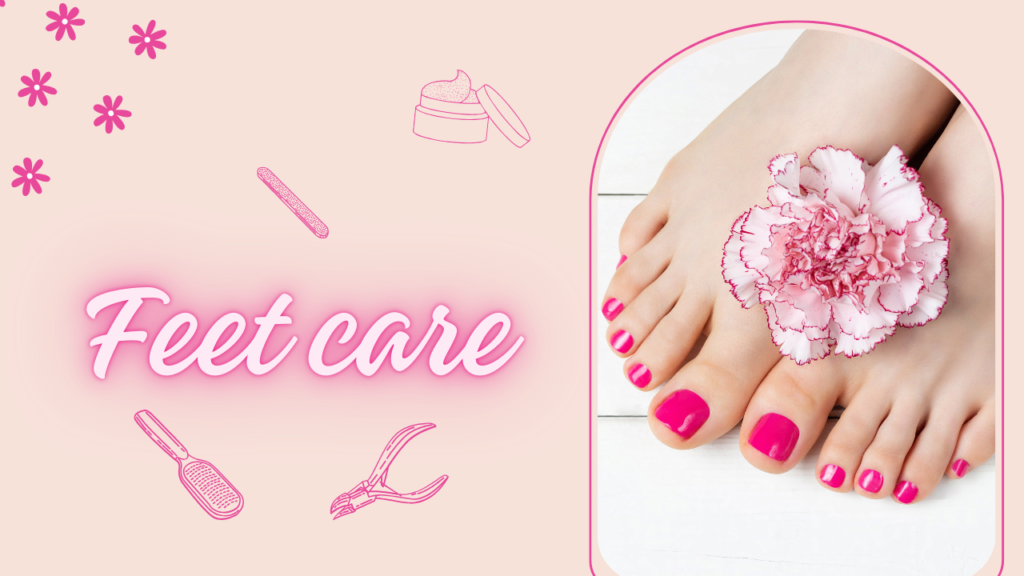
Feet care
feet care
Feet Care: A Complete Guide to Healthy Beautiful Feet
Most neglected of our body parts are usually the feet, yet these take us through our daily routines, and they bear all our body weight. Every day they have to withstand friction in the form of walking for miles, running, and having shoes on them most of the time. A lot has to be done on their care not only in comfort but also for your entire body. Healthy feet provide the foundation for healthy body.

In this all-inclusive guide, various aspects about foot care ranging from the common problem faced in feet, daily routines to ensure healthy feet, and special treatments aimed at soft, smooth, and beautiful feet will be discussed.
- Why Foot Care is Important
Feat are probably one of the most ignored parts of the human body, yet they are what help support the entire body’s weight to enable us to balance. It enables mobility in the human body, and hence, proper foot care is needed not only to avoid pains but also to avoid joint pain, corns, calluses, bunions, and infections. Neglecting the condition would bring chronic pain, issues on mobility, and even skin conditions which may compromise the person’s health and appearance.
Foot care is very important in general health. Cleaning and moisturizing the feet along with proper protection from environmental conditions may prevent fungal infections, blisters, and cracked heels. Healthy feet also mean good posture without strain on your knees, hips, and lower back. Good hygiene of the feet and daily self-care practices enhance comfort but boost confidence, allowing one to feel comfortable in casual and formal settings.
This article provides information regarding foot care practices, prevention, and advice to persons who are afflicted with any form of foot conditions and wish to maintain their feet in the best condition possible.
- Routine Foot Care Daily Routine
Maintaining healthy and aesthetic feet is a matter of consistent daily foot care. Good foot hygiene and a little care time every day can prevent common problems in your feet and will make them feel comfortable all the time. Here are some important steps to be followed for a routine foot care daily routine:
Step 1: Cleaning and Drying Your Feet
The first step in performing your foot care is properly cleaning your feet. Clean the feet daily with warm water, using a mild soap and avoiding hot water as the skin may dry out fast. Clean between the toes of your feet to remove dirt and bacteria where moisture can cause fungal infections.
After washing, dry your feet thoroughly, especially between the toes. Damp skin creates a perfect environment for fungal growth, so make sure there’s no lingering moisture after washing. This is especially important in warm, humid climates or if you’re prone to sweating.
Step 2: Exfoliate Regularly
Dead skin cells are removed through exfoliation, and calluses and rough patches do not have a chance to develop. To remove dead skin on the soles and heels, use a pumice stone, foot scrub, or exfoliating cream. It is enough to do this once or twice a week to keep the skin smooth and soft.
Step 3: Moisturize Your Feet
Moisturizing will help keep the skin on your feet soft and hydrated. Select a rich, emollient foot cream that contains shea butter, glycerin, or coconut oil, which are known moisture lockers. Spread this over generously and massage into your feet, but really pay extra attention to dry spots like the heel, as these areas tend to crack the most and collect the most callus material.
If your feet are really dry, you may need to apply moisturizer at night and put on cotton socks so that the cream will penetrate completely. This helps avoid dryness and cracking.
Step 4: Trim Your Toenails
The other important procedure in foot care is frequent nail trimming. Keeping toenails short will avoid discomfort and even conditions such as ingrown toenails. Use a pair of clean, sharp nail clippers or a toenail trimmer to carefully trim the nails straight across, avoiding cutting them too short and inflicting painful ingrown nails.
Step 5: Protect your feet from the injury
Wearing the proper shoes will save you from injuries on the feet. Too tight and too loose can cause blisters and calluses as well as a sense of discomfort. Fitted shoes, supporting the structure of the foot naturally, are providing the appropriate cushioning and arch support. If one intends to stay standing for most of the time, then use an insole or a cushioned footbed to give some reprieve to your foot.
- Common Foot Problems and Their Prevention
There are various conditions that afflict feet and bring about discomfort or even major health issues in severe cases. Common problems and ways of prevention or treatment of these problems will play a crucial role in healthy feet. - Blistering
Blisters result from irritation caused to the skin by friction from shoes badly fitted or if a long distance is walked by a person without proper care of his feet. They are painful and can easily become infected unless treated in time.
Prevention: Prevention of blistering can be done if your shoes are not too tight and you avoid using the new shoes for a longer period without breaking them. You can also use blister pads or moleskin at places where friction occurs mainly on the heels or the toes.
- Corns and Calluses
Corns are areas of hardened and thickened skin produced due to either pressure or friction; common locations occur at the top or even at the side of the toes. Calluses refer to patches of thickened skin under the feet; this results from frequent friction or rubbing on the skin.
Prevention: Wearing well-fitting shoes with enough room for the toes prevents corns and calluses. Regular exfoliation using a pumice stone or foot scrub can keep the skin smooth.
- Fungal Infections (Athlete’s Foot)
It’s a fungal infection that is thrives in warm moist settings; it often causes itching and reddening and peeling, primarily between the toes.
Prevention: Dry your feet completely after washing, specifically between your toes. This will prevent fungal infections and help prevent athlete’s foot. Use socks made of breathable materials like cotton or moisture-wicking fabrics; this reduces the moisture collection inside the sock. Use foot powder or spray that has been established to contain antifungals if you are prone to catching it.
- Ingrown Toenails
Ingrown toenails result when the edges of the toenail grow into the surrounding skin, causing pain, redness, and swelling. These usually occur due to poor trimming of the nails or shoes that press on the toes.
Prevention: Trim your toenails straight across and don’t cut them too short. Don’t wear shoes that crowd the toes or put pressure on the nail bed. Seek expert treatment through a podiatrist if an ingrown toenail is causing you pain.
- Bunion
A bunion is an abnormal bone growth that develops at the back of the big toe as a result of displacement of a joint or bone at the base of the toe. A bunion is painful with redness and swelling and becomes painful to walk.
Prevention: Wearing wide shoes that do not compress the toes together. The use of high heels or those that make the feet stand in an unnatural position is discouraged. Orthotic devices, such as bunion pads, can also relieve pressure. In extreme cases, surgery may be necessary to correct the condition.
- Foot Treatments for Soft and Smooth Feet
For those wanting to push themselves to develop a healthy foot care routine, several treatments can keep your feet at their best. - Foot Soaks
Pamper your feet in a warm foot soak. You could add Epsom salts for the reduction of inflammation and relaxation. Alternatively, you can include a couple of drops of lavender or tea tree essential oils, which are excellent for decongestant, relaxation, and anti-fungal properties. - Foot Masks
Foot masks are a great option for deep hydration and skin rejuvenation. These masks are usually filled with nourishing ingredients such as hyaluronic acid, shea butter, and oils that give intense moisture. Some even have exfoliating properties to remove dead skin cells while treating the feet. - Pedicures
Not only a luxurious treat but also keeping your feet in great condition, regular pedicures are something. Pedicures can really help out with nail trimming, removal of dead skin, and general circulation. Whichever is preferred-by the professional pedicure at a salon or even doing this at home-you’re good to go as long as it keeps the feet looking their best. - Foot scrubs and exfoliants
To keep smooth feet, use a gentle foot scrub that exfoliates dead skin and softens rough patches. Scrubs from natural ingredients, such as sugar, salt, or coffee grounds, really do buff off dead skin cells. Heavy-duty exfoliants or pumice stones can help deal with troublesome calluses. - Moisturizing Foot Creams
Thicken moisturizing foot creams with ingredients such as urea, shea butter, or ceramides to keep your feet moist. The creams will soften tough skin, prevent dryness, and gradually improve the texture of your feet.
